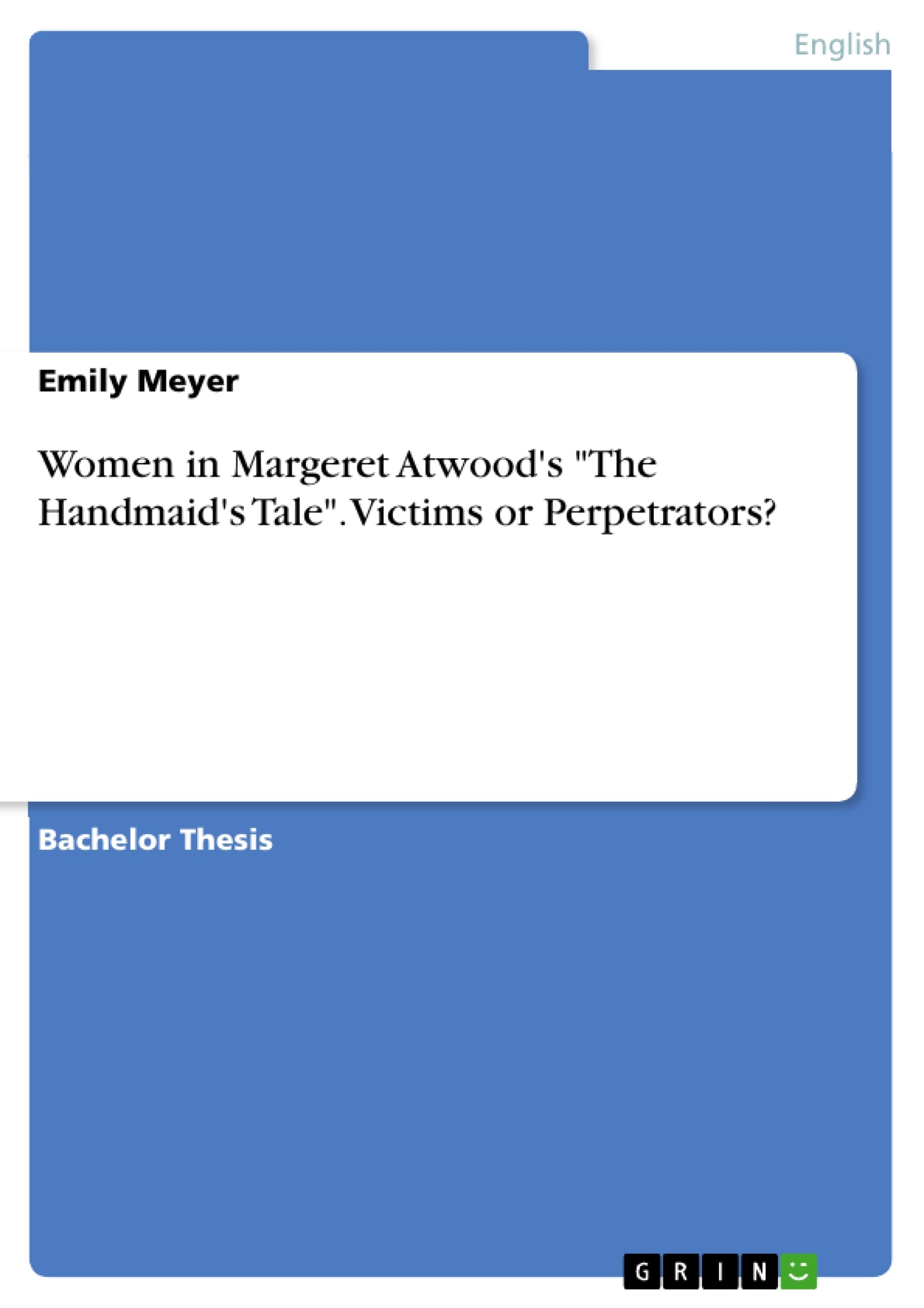In Gilead, women are robbed of their former lives and roughly divided into hierarchical groups of Aunts, Wives, Handmaids, and Marthas. Being a victim to such inherent misogyny in a patriarchal culture, the women are left with nothing other than the feeling of being objectified and silenced. However, the women also become victims of one another and the line between victim and perpetrator starts to blur. This thesis aims at exploring women as oppressed victims and the perpetrating force of oppression at the same time. Furthermore, it will analyze the Panoptic surveillance system in order to explain the internalized sexism. Unlike most literary critics who have only considered The Handmaid's Tale in their critique, the present thesis also includes Atwood's latest novel The Testaments.
This thesis introduces power, authority, and Panopticism (Foucault, Gramsci) as a concept to understand the root of the political structures in Gilead. With the concept of panoptic power, the chapter of women as victims is properly introduced in order to analyze the various ways in which women are subjugated and controlled everywhere they go. For the chapter on women as victims, this paper will consider sociological and historical aspects of misogyny and sexism, feminist literature, and linguistic phenomena that can be linked to power (or a lack thereof) to analyze women’s situation from a victim’s perspective. Furthermore, it is sectioned into three instances of institutionalized, interpersonal and internalized sexism. In contrast to that, the next chapter evaluates how women in Gilead are the active perpetrators who watch, discipline and subjugate other women. As internalized sexism is a key theme with women actively competing and mistreating each other, the background of that will be explored with feminist and sociological theories.
Inhaltsverzeichnis (Table of Contents)
- 1 Introduction
- 2 Understanding Power and Authority
- 2.1 Definition and Understanding of Power and Authority (Gramsci & Foucault)
- 2.2 Panopticism
- 3 Women as Victims
- 3.1 Institutionalized Sexism
- 3.2 Interpersonal Sexism
- 3.3 Internalized Sexism
- 4 Women as Perpetrators
- 5 Women in Gilead: Victims or Perpetrators?
- 6 Conclusion
Zielsetzung und Themenschwerpunkte (Objectives and Key Themes)
This thesis analyzes the roles of women in Margaret Atwood's dystopian novel, The Handmaid's Tale, and its sequel, The Testaments, arguing that while they are undoubtedly victims of a patriarchal and theocratic regime, they also become perpetrators of oppression against other women. This thesis explores the complex dynamics of power and authority in Gilead, examining how women are both controlled and complicit in a system that strips them of their individuality and agency.
- The dynamics of power and authority in Gilead, drawing on the theories of Michel Foucault and Antonio Gramsci.
- The various forms of sexism that women experience in Gilead, including institutionalized, interpersonal, and internalized sexism.
- The ways in which women become perpetrators of oppression against other women, particularly through the internalization of sexist ideologies.
- The role of panoptic surveillance in controlling women's lives and shaping their behavior.
- The significance of the frontier motif in Atwood's work and its connection to themes of victimization and survival.
Zusammenfassung der Kapitel (Chapter Summaries)
The first chapter introduces the main question of the thesis: are women in Gilead victims or perpetrators? It sets the context by examining the theme of "unheroic victimization" in Canadian literature and its connection to Atwood's exploration of power dynamics.
Chapter two explores the concepts of power and authority, drawing on the theories of Foucault and Gramsci. It discusses the distinction between power and authority, focusing on the ways in which power can be legitimized and how resistance can be delegitimized. The chapter also introduces the concept of panoptic power, which will be crucial to understanding the control exerted over women in Gilead.
Chapter three analyzes the different ways in which women in Gilead are victims of sexism. It examines institutionalized sexism, which is embedded in the social and legal structures of Gilead, as well as interpersonal sexism, which manifests in the relationships between women. The chapter also explores internalized sexism, which refers to the ways in which women internalize and reproduce sexist beliefs and behaviors.
Chapter four examines the ways in which women in Gilead become perpetrators of oppression against other women. It focuses on the role of internalized sexism in shaping women's actions and their participation in the system of control.
Finally, Chapter five delves into the question of whether women in Gilead are ultimately victims or perpetrators. It explores the complex relationship between victimization and perpetration, arguing that women in Gilead are both oppressed and complicit in the system that controls them.
Schlüsselwörter (Keywords)
This thesis focuses on the themes of power, authority, sexism, victimization, and perpetration in Margaret Atwood's The Handmaid's Tale and The Testaments. It draws on the theories of Foucault, Gramsci, and feminist scholarship to analyze the complex dynamics of oppression in a patriarchal and theocratic regime. Key concepts include panopticism, internalized sexism, and the frontier motif. It examines the ways in which women are both victims and perpetrators of a system that seeks to control their lives and identities.
- Quote paper
- Emily Meyer (Author), 2022, Women in Margeret Atwood's "The Handmaid's Tale". Victims or Perpetrators?, Munich, GRIN Verlag, https://www.grin.com/document/1272476



